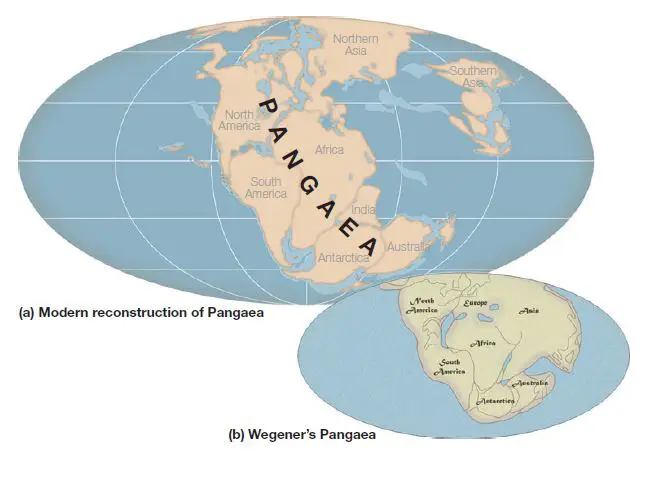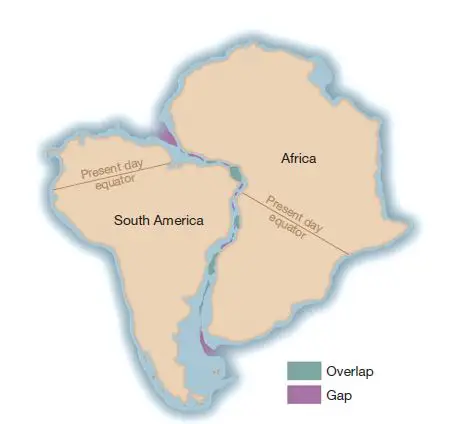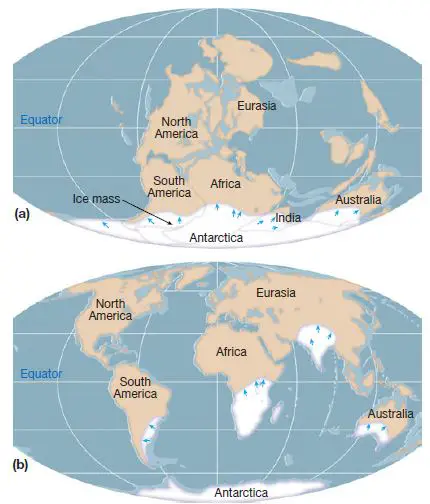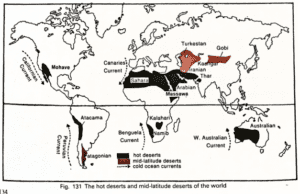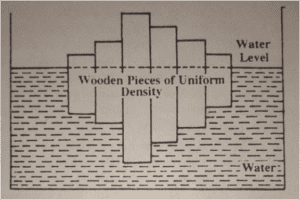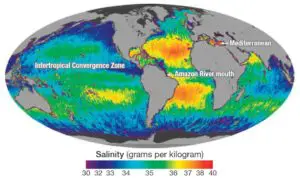4 pieces of evidence for continental drift by Alfred Wegener
(An Analysis of – Evidence and Rejection of the Theory)
During the second and third decades of the twentieth century, the notion of continental drift was revived, most notably by the German meteorologist and geophysicist Alfred Wegener.
- Wegener put together the first comprehensive theory to describe and partially explain the phenomenon, publishing his landmark book Die Entstehung der Kontinente und Ozeane (The Origin of Continents and Oceans) in 1915.
- Wegener postulated a massive supercontinent, which he called Pangaea (Greek for “whole land”), as existing about 225 million years ago and then breaking apart into several large sections – the present-day continents—that have continued to move away from one another to this day.
Wegener’s Evidence for Continental Drift Theory | UPSC – IAS
Wegener accumulated a great deal of evidence to support his hypothesis, most notably the remarkable number of close affinities of geologic features on both sides of the Atlantic Ocean.
He found the continental margins of the subequatorial portions of Africa and South America fit together with jigsaw- puzzle-like precision.
He also determined that the petrologic (rock) records on both sides of the Atlantic show many distributions—such as ancient coal deposits—that would be continuous if the ocean did not intervene. Moreover, when the continents are placed back in their Pangaean configuration, mountain belts in Scandinavia and the British Isles match up with the Appalachian Mountains in eastern North America
Supporting evidence came from paleontology: the fossils of some dinosaur and other reptile species, such as the freshwater swimming reptile the Mesosaurus, are found on both sides of the southern Atlantic Ocean, but nowhere else in the world. Fossilized plants, such as the fernlike Glossopteris, are found in similar- aged rocks in South America, South Africa, Australia, India, and Antarctica – its seeds too large and heavy to have been carried across the expanse of the present-day oceans by wind.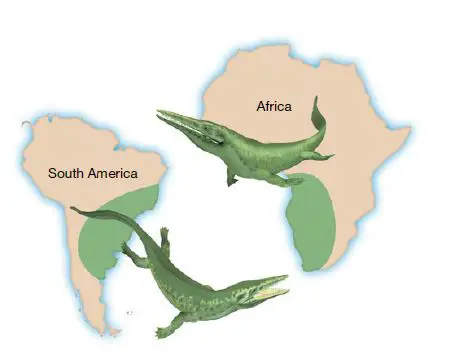 Wegener worked with climatologist Wladimir Köppen to study the past climate patterns of Earth. For example, they studied glacial deposits that indicated that large portions of the southern continents and India were extensively glaciated about 300 million years ago. The pattern of deposits made sense if the continents had been together in Pangaea when this glaciation took place.
Wegener worked with climatologist Wladimir Köppen to study the past climate patterns of Earth. For example, they studied glacial deposits that indicated that large portions of the southern continents and India were extensively glaciated about 300 million years ago. The pattern of deposits made sense if the continents had been together in Pangaea when this glaciation took place.
Rejection of Continental Drift Theory | UPSC – IAS
Wegener’s accumulated evidence could be most logically explained by continental drift. His ideas attracted much attention in the 1920s—and generated much controversy.
Some Southern Hemisphere geologists, particularly in South Africa, responded with enthusiasm. The general response to Wegener’s hypothesis, however, was disbelief. Despite the vast amount of evidence Wegener presented, most scientists felt that two difficulties made the theory improbable if not impossible:
- (1) Earth’s crust was believed to be too rigid to permit such large-scale motions—after all, how could solid rock plow through solid rock?
- (2) Further, Wegener did not offer a suitable mechanism that could displace such large masses for a long journey.
For these reasons, most Earth scientists ignored or even debunked the idea of continental drift for the better part of half a century after Wegener’s theory was presented.
- Although certainly discouraged that his ideas on continental drift were rejected by most scientists, Wegener continued his other scientific work—most notably in meteorology and polar research, where his contributions are widely acknowledged.
- In 1930, Wegener was leading a meteorological expedition to the ice cap of Greenland. After delivering supplies to scientists stationed in the remote research outpost of Eismitte in the middle of the ice cap, on November 1 Wegener and a fellow expedition member, Rasmus Villumsen, set out by skis and dogsled to return to their base camp near the coast, but neither arrived. Wegener’s body was found six months later buried in the snow—he died decades before his ideas on continental drift would receive serious attention by the majority of Earth scientists.
